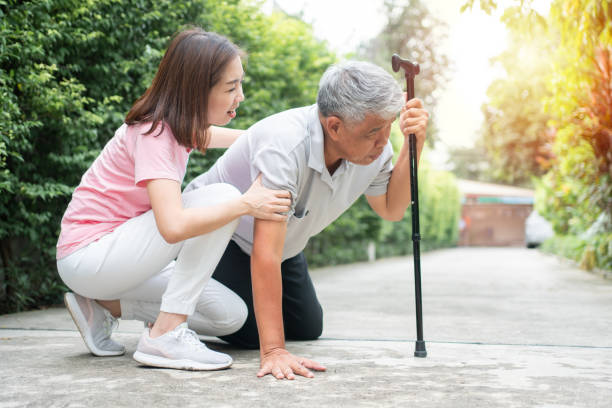Fall Prevention For Older Adults
Injuries from falls are a serious threat to the health of older adults in the United States. In 2020, over 36,000 deaths were reported from falls among adults 65 years and older, making it the leading cause of injury deaths for that age demographic. It is estimated that one in four older adults fall each year but only about half are reported to their doctors. What is especially alarming is that one out of five falls result in injuries such as bone fractures and head trauma.
What Causes Falls Among Seniors
Clearly, the risk of falls and subsequent injury is significantly greater for older adults than any other segment of the population. The reasons why seniors are at a higher risk of falling is predicated upon multiple factors including:
• Muscle weakness, especially to the lower extremities.
• Vitamin D deficiency (which contributes to bone density loss).
• Vision and hearing problems.
• Walking and balance issues (including problems with foot health or improper footwear)
• Side effects from medication that affect walking and balance.
• Hazards in the home (difficult stairways, flooring, rugs, and clutter)
Many older adults suffer multiple risk factors which increases the likelihood of falling and injury. Fortunately, there are ways to minimize these risks, so it is important to know how to prevent falls before they happen.
How To Prevent Falls
1. If you are of senior age, one of the best ways to eliminate or minimize the risk of falling is by having a falls risk assessment performed by your healthcare provider. You will be evaluated on your mobility and balance capabilities as well as your home environment to identify risks that can contribute to potential falls.
2. Speak with your physician about exercise programs that can improve your agility, strength, and balance. If you are an active senior, engage in regular indoor and outdoor exercise activities such as walking, jogging, hiking, swimming, dancing and even weight training. The healthier you are, the less risk your risk of falling.
3. Many falls can be prevented by utilizing properly fitted assistive devices such as canes and walkers. For individuals that are at a higher risk of falling, medical alert technologies can be provided that can bring help quickly should a fall occur.
4. Decluttering your home is another excellent method of fall prevention. Many falls occur because of obstacles that are present along the paths in your home that you use regularly in your daily living activities. Consider rearranging furniture to make moving around easier and safer and install handrails along steps and grab bars in bathrooms.
5. Make the things you use often in your home more readily accessible. Place items in your cabinets within easy reach and if a spill happens, have paper towels or cloths handy so you can clean it up immediately.
6. Wear the right kind of footwear. Having properly fitted shoes with non-skid soles is highly recommended. Avoid walking around your home in stocking feet or in slippers that are ill-fitting or have smooth soles.
7. Keep walkways outside your home clear of debris. This includes paths that you often use such as to your front door, garage, and mailbox. If any of your outdoor steps or walkways are broken or crumbling, have them repaired.
8. Discuss potential side effects of your medications with your physician. Understand which medications can increase your risk of falling. Having a greater sense of awareness about your medications and the potential side effects can prevent falls before they happen.
9. Taking care of your vision and hearing can help lower your risk of falling. Wear your prescribed lenses when moving around and never wear sunglasses indoors. Make sure your home is properly lit so that you can clearly see any obstacles that might be in your way. If you have hearing difficulties, consult your audiologist. Keeping your eyes and ears healthy are keys to being stable on your feet.
The most effective way to deal with falls is to be proactive in your approach. Do everything possible to prevent falls before they occur. By being aware of the risks of falling and how to avoid them, you can be confident that the only thing that falls in your home are the leaves on your trees.


Leave a Reply
You must be logged in to post a comment.